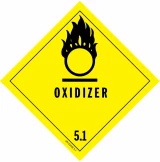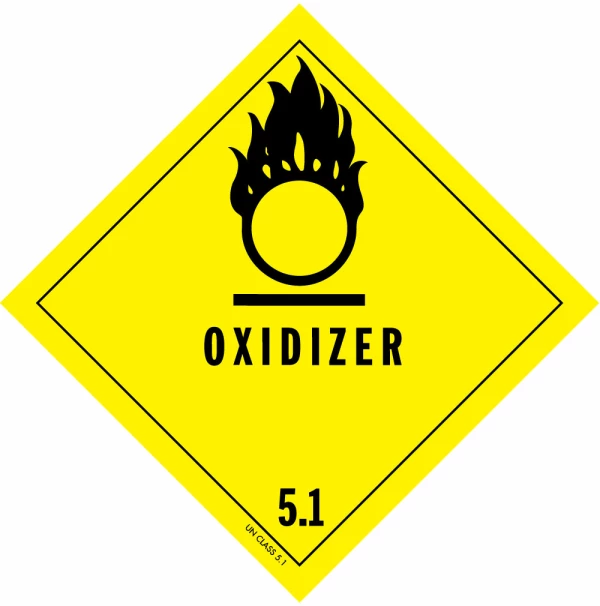to select
to navigate
esc to close
Popular Pages
Go Back
Custom Packaging
Bags & Liners
Tubing & Film
Packaging Supplies
Shop by Application

Hi there,
how can we help you today?
Shipping options will change based on location.
Current ZIP Code:
Update zip code
User my current location
Order before 4pm EST for same-day shipping on in-stock items!
Lowest Price Guarantee
30-Day Returns & Exchanges
100% Satisfaction Guarantee

$27.75 / Roll of 500
Ship to ZIP Code
| Save up to 6.2% when you order in bulk | |||||
|---|---|---|---|---|---|
| Quantity | Pieces | Per Roll | Total | You Save | |
| 1 Roll | 500 | $27.75 | $27.75 | 4.3% | |
| 3 Rolls | 1500 | $27.40 | $82.20 | 5.5% | |
| 5 Rolls | 2500 | $27.20 | $136.00 | 6.2% | |
| 10+ Rolls | 5000+ | Get a free high quantity quote | |||
GTIN: 00631546037917
This D.O.T. Oxidizer label clearly identifies potential hazards like a cylinder of oxygen or Trichloroisocyanuric acid (which is used in automatic chlorine feeders for swimming pools) in a familiar design. This 4 inch X 4 inch, Department of Transportaion shipping label conveys hazard information for containers or shipments of hazardous materials. The yellow background with black text on top and the "burning O" graphic cleary communicates D.O.T. "OXIDIZER 5.1". Flexible llabel stock with permanent adhesive. Printed with UV-stable ink and is suitable for indoor or outdoor use at service temperatures from -40 F to +180 F.
An oxidizer is a chemical that readily yields oxygen in reactions, thereby causing or enhancing combustion.
OXIDIZER
Electronic Code of Federal Regulations for OXIDIZER D.O.T. Label
Division 5.1: Oxidizers
An oxidizer is a material that may, generally by yielding oxygen, cause or enhance the combustion of other materials.
DivisionsSee More
No customer reviews





